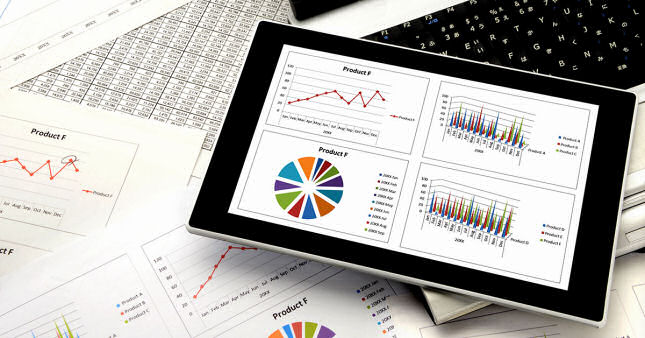What is beta and how does stock beta affect you?

What is a simple beta definition?
Stock beta is a measurement of the volatility of a stock as compared to the volatility of the market. It can be used to compare the market risk of a particular stock to other stocks in the same industry.
Stock beta is measured by analyzing a stock’s performance in the past in order to evaluate how its price might move in relation to the overall market. Calculating the beta coefficient for a particular stock can help to determine how its returns react to market swings.
Why is portfolio beta investment important?
Portfolio beta allows you to gain a better understanding of the risks in your portfolio as well as your ability to tolerate risk. Portfolio beta also allows you to recognize which investments match your risk tolerance level and which do not.
Investors who are risk-averse tend to put their money into assets that have low beta coefficients such as Treasury bills and utility stocks. Investors who are able to tolerate a higher degree of risk tend to invest in stocks that have higher beta coefficients.
Risk and age
People who are younger can take on more risk than those who are nearing their retirement age. However, statistics demonstrate that only 36% of millennials are willing to take on risks. By contrast, 45% of members of Generation X are willing to take on more risks with their investments. The percentage drops again as people age, as shown by the generation of baby boomers where 31% are willing to take on more risk.
The percentage of people who are invested in the stock market has remained above 50% since 1999. Most recently, 55% of adults in the U.S. had some stock market investments.
Risk and beta
Beta investment is used as an indicator of systematic risk, volatility, and market risk. The systematic risk is the risk that is intrinsic to the entire market. It affects the general market and not just a particular stock or industry.
Systematic risk is unpredictable and cannot be completely avoided through diversification. Hedging is a way to minimize this type of risk, which is offsetting one investment against another. Your asset allocation strategy can also help to diminish the systematic risk by apportioning your assets according to your goals, level of risk tolerance, and your time horizon.
There is a possibility that an investment’s actual return will be different from its expected return. Investment beta includes the possibility that you will lose some or all of your original investment amount. Different types of risk can be measured by calculating the standard deviation of the average returns or the previous returns of an investment.
A stock’s price variability should be considered when you are assessing risk. To determine the short-term risk of a stock, use the beta coefficient and the price volatility.
Volatility
Volatility is a measurement of the distribution of returns for a particular index or security. Assets that are more volatile are considered to have a higher risk than assets that are less volatile. This is because the price is expected to be unpredictable for volatile assets. You can calculate how volatile a stock is and the systematic risk by calculating its beta coefficient.

Formula for beta
Beta in finance can be calculated by using regression analysis. This helps to place a value on assets when you are comparing two or more variables. The formula for calculating portfolio beta is as follows:
Beta = Covariance / Variance
Calculating beta finance is not too difficult and can be done with a spreadsheet program and some market data. To calculate the beta coefficient of a single stock, you will need to gather the daily closing prices over a given period of time. You will also gather the daily closing prices for a benchmark market index over the same time period.
Next, calculate the daily price change for both the target stock and the market index. These are calculated separately using the following formula:
((Today’s price – Price yesterday) / Yesterday’s price) x 100
After you have calculated the daily price changes for both your stock and for the market index, compare how the stock and the index have moved together relative to how the index has moved alone. The result is the stock beta. The formula for calculating it is as follows:
Stock Beta = Covariance ÷ Variance
This can also be expressed as the stock’s daily change and the index’s daily change divided by the index’s daily change.
Beta is used in the Capital Asset Price Model, which measures a stock’s return. The CAPM calculates the required return of an asset versus its risk. The required return is calculated by taking the risk-free rate and adding the risk premium. You can find the risk premium by taking the market return and subtracting the risk-free rate from it. You then multiply that result by the stock beta.
A positive beta value indicates that a stock generally moves in the same direction as the market and vice versa. You can look up the beta of different stocks on Yahoo! Finance.
Beta and the market
The market has a beta of 1.0. Individual stocks are ranked according to how much they depart from the market standard. Stocks with lower betas are considered to have less risk. High-beta stocks are riskier, but they have the potential for higher returns. Stocks that deviate more than the market value over a length of time will have betas of above 1.0.
If a stock deviates less than the market does, the stock will have a beta of less than 1.0. Low-beta stocks have less risk, but they also provide lower returns. The market against which you measure beta is a stock index. Commonly, investors use the S&P 500 to measure beta against because of its large number of large-cap stocks as well as a vast number of different sectors.
Difference between alpha and beta
Alpha and beta are both commonly used to measure performance. Alpha is a measurement of the excess return or active return of an investment or a portfolio. Beta finance measures the volatility of a portfolio or security as compared to the market.
Both alpha and beta look at the past performance of a stock or a portfolio. However, this cannot guarantee that the stock or portfolio will perform the same in the future.

Beta finance and types of risk in stocks and portfolios
Beta finance recognizes several levels of risk, including aggressive, moderate, and conservative. Aggressive portfolios carry a high-risk but high-reward proposition. Beta finance for aggressive portfolios means that the stocks tend to have a high beta or sensitivity to the overall market. Higher beta stocks normally experience larger fluctuations as compared to the overall market.
Portfolios that carry a moderate risk have a medium amount of risk and a time horizon of longer than five years. Investors who are more conservative with their portfolios may choose defensive stocks. Stocks that do not have a high beta are fairly insulated from large market movements.
Cyclical stocks are the most sensitive stocks to the underlying economic business cycle. The benefit of purchasing cyclical stocks is that they offer an extra layer of protection against negative events.
Beta investors are normally passive investors. People who use beta finance are normally not looking to outperform the market.
Benefits and limitations
Beta can be a good measure of risk for short-term traders who are looking to buy and sell stocks. It can also be useful to help you with properly diversifying the investments in your portfolio.
While beta can be useful, it also has some limitations. Beta leaves out recent information such as new debt or an insufficient price history. It relies on past information, which does not guarantee the continued or stronger future performance of a stock.
The past price fluctuations of a stock are a poor future predictor. Past beta is not a good predictor of future beta. The measurement of beta on a single stock tends to be volatile over time. Finally, it is also not a good choice for long-term investors.
Smart beta
Smart beta combines the benefits of passive and active investing strategies. The approach varies from investor to investor. In 2019, funds that use these strategies command $880 billion in total cumulative assets.
This strategy attempts to use certain performance factors in order to try to outperform a benchmark index. It applies a series of objective, rules-based factors for each index’s company. They are then ranked and weighted based on specific factors. The strategy emphasizes capturing investment factors or market inefficiencies in a rules-based way.
Traditional market-cap weighted indexes like the S&P 500 place their weight solely on the market caps. This gives larger companies a bigger slice of the index even when they are considered to be overvalued.
Investors may also use alternative weighting measurements such as quality, volatility, value, size, liquidity, and momentum. The strategies are used to allocate and rebalance portfolio holdings. They seek to improve your returns and your diversification, and they reduce the risk by investing in customized indexes or exchange-traded funds.
The overarching goal is to attain alpha, which means to outperform or have less risk than traditional benchmarks. However, they tend to have lower expenses than an active fund. These strategies are good for investors that favor factor diversification such as equities, fixed income, commodities, and multi-asset classes.
Whether you choose this type of beta strategy should be determined based on your financial objectives and your time horizon. Your portfolio beta provides you with one way to determine the degree of risk that it carries. M1 Finance allows you to choose tailored portfolios according to your risk tolerance or to choose a portfolio that was created by finance experts to match varying levels of risk tolerance.

Manage your risk with M1 Finance
With M1 Finance, you can manage your risk tolerance in a modern way. You are also able to maximize your retirement savings with free IRAs from M1 Finance. The platform makes diversification very simple and ensures that you are always fully invested when you choose to invest through M1 Finance.
At M1 Finance, you are able to choose investments that match your ability to tolerate risk. You can customize your investment portfolio to meet your needs or choose from a menu comprised of 80-plus portfolios that are each individualized to meet different risk tolerances, financial goals, and the times that investors have to invest.
Accessible investing
The M1 Finance platform helps to make investing accessible to all investors by the provision of straightforward access to its powerful automation at any time. M1 Finance allows all people to invest without having to pay commissions or management fees. This allows your money to work harder to reach your goals.
M1 Finance allows you to start investing for free. It offers simple, secure, and free investing. The investment accounts at M1 Finance are SIPC-insured. The SIPC protects the securities customers of its members up to $500,000. SIPC insurance offers limited protection to investors from losses caused by broker fraud, thefts, and unauthorized trades.
The M1 Finance investment platform is intuitive, and it can save you time through its dynamic rebalancing and automated reinvestment. This helps to keep your portfolio moving to meet your goals automatically. M1 Finance combines important investing principles with digital technology to make the investing process simpler, which allows you to build your wealth with little effort.
